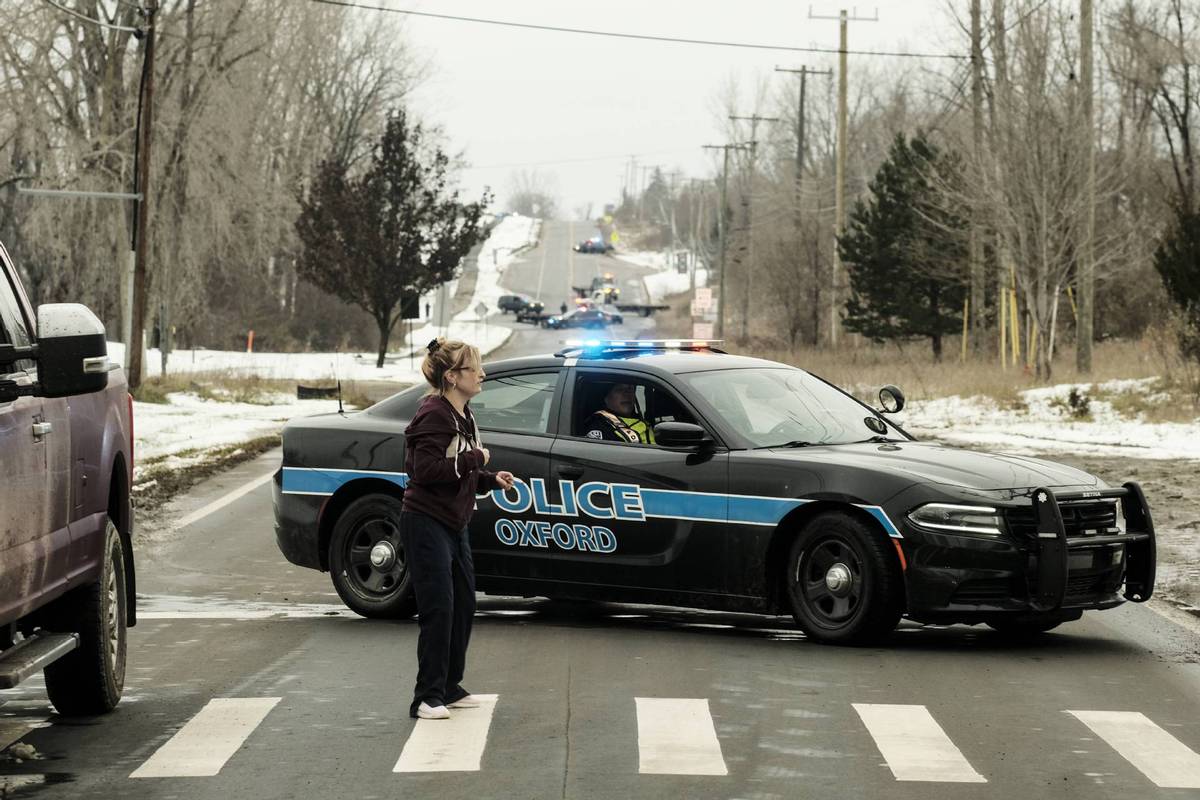Amid gun violence at US schools, use of detectors debated
By AI HEPING in New York | chinadaily.com.cn | Updated: 2021-12-03 11:55

The semiautomatic gun that police say a 15-year-old used in a shooting rampage at Oxford High School near Detroit, Michigan, on Tuesday afternoon was brought into the school hidden in a backpack, authorities said.
On Tuesday afternoon, Harding University High School in west Charlotte, North Carolina, was put on lock down after a fight. A gun was found in a book bag. Two students face charges. No one was hurt.
In the Michigan incident, Ethan Crumbley has been charged with killing four students and wounding seven other people.
There were no metal detectors at the Charlotte or the Oxford Township school. Tim Throne, the superintendent of Oxford Community Schools, said that he couldn't recall the use of metal detectors ever coming up.
But as schools across the US experience more guns being brought into them — and sometimes used as in Michigan — more are looking at or already adding safety measures, including metal detectors.
The Federal Commission on School Safety has recommended the use of metal detectors, but the vast majority of schools don't use them on a daily basis. They are expensive to purchase, staff and maintain.
Recent US government statistics indicate that about 2 percent of elementary schools in the US use metal detectors, 7 percent of middle schools and 10 percent of high schools.
Stationary metal detectors used on a daily basis are typically limited to large urban school districts with a history of weapons-related offenses, like New York City.
The city, which has the largest public school district in the US with just over 1 million students, recently identified 30 schools that will immediately see metal detectors on an "unannounced" rotating basis, Mayor Bill de Blasio said on Oct 25.
Permanent metal detectors are at 79 city schools, and seven roving metal detectors are in operation, officials said.
The mayor's decision came as the number of guns found in schools has increased this school year. Eight have been recovered from students through Oct 24, up from one during the same time during the 2019-20 school year, and two the year before that, according to police data.
In the two days before de Blasio's announcement, school safety agents recovered five guns from students. Two of them were identified by metal detectors, police said.
But the overall effectiveness of metal detectors in the city's schools isn't known. The police department has declined to provide detailed data about which schools have metal detectors and what items were confiscated as a result, despite a city law requiring disclosure of that information.
'We have so little insight into the effectiveness of metal detectors or unannounced scanning," said Joanna Miller, director of the New York Civil Liberties Union's Education Policy Center. Her organization is suing the police department for information about how the metal detectors are used.
A 2016 investigation by ProPublica, an independent, non-profit newsroom that produces investigative journalism, and WNYC, part of the National Public Radio network, found that black and Hispanic high school students were three times as likely to be required to walk through a metal detector compared to white students, and the amount of contraband picked up by them was relatively low.
A 2019 study — Are Metal Detectors Effective at Making Schools Safer? — by the San Francisco-based West End Justice and Prevention Center, said there is little evidence to support their effectiveness at preventing school shootings or successfully detecting weapons at schools. The center is a nonpartisan, nonprofit research, development and service agency.
"Equally concerning are potential unintended negative consequences'' associated with their use, it said. "Students in schools with metal detectors, which typically are schools with greater proportions of students of color, are more likely to perceive violence and disorder and less likely to feel safe than students in schools without metal detectors.''
The National School Safety and Security Services, a Cleveland, Ohio-based private, for-profit national school safety consulting firm, has said that metal detectors aren't the answer for the majority of school districts.
"School leaders must consider both the financial and implementation investments of properly running a metal detector program and determine if the potential return on investment is as great as putting those financial, manpower and operational resources into other prevention, intervention, security and preparedness strategies,'' it said.
























